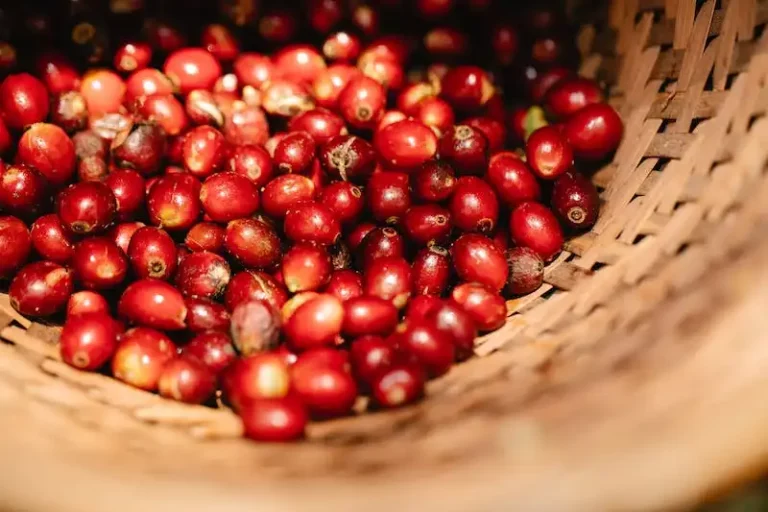Spinach is a popular leafy green vegetable that thrives in cool-season gardens. However, there are different types of spinach varieties that can be grown in various climates, including warm or semi-warm zones. These spinach varieties are specifically bred to withstand the heat and provide a bountiful harvest.
One of the best spinach varieties for warmer climates is the Tyee spinach. It is a robust and high-yielding spinach that resists diseases and pests such as aphids and leafminers. Tyee spinach is slow to bolt, meaning it takes longer than usual to begin flowering and producing seeds. This feature allows for longer harvests and ensures a steady supply of fresh spinach throughout the growing season.
Another great spinach variety for warm zones is the Carmel Indian spinach. This variety has been bred to be heat-tolerant and can withstand the high temperatures typically experienced in regions like Wisconsin. Carmel Indian spinach has thick, round-seeded leaves that are perfect for cooking, and its flavor is similar to that of chard. It is a dependable and longstanding spinach variety that is available in many garden centers.
If you prefer baby spinach or want a variety suitable for container gardening, the Okame spinach is an excellent choice. This spinach variety grows slowly, forming small and tender leaves that are perfect for salads. Okame spinach is a compact plant that can fit in small spaces and can be grown in pots or raised beds. It is an early season spinach, meaning it can be harvested before the heat of summer arrives.
For those who enjoy larger spinach leaves, the Giant Winter or Viroflay varieties are recommended. These spinach varieties have large, smooth leaves that are perfect for cooking. The Giant Winter spinach is a high-yielding variety that can last through the cool-season and can be enjoyed in both raw and cooked dishes. Viroflay spinach is a classic spinach variety that has been grown in America for centuries. It is a productive and disease-resistant spinach that can be grown in various zones.
In conclusion, there are several types of spinach varieties available for gardeners, ranging from heat-tolerant to cool-season spinach. Whether you prefer high-yielding varieties like Tyee or Viroflay or compact varieties like Okame, there is a spinach variety suitable for your garden. Spinach is a nutritious and delicious vegetable that can be enjoyed in salads, soups, or as a side dish. So, take your pick and start growing these flavorful greens in your garden!
Unless Otherwise Noted Spinacia oleracea
When it comes to spinach, Spinacia oleracea is the most commonly grown and consumed species. This smooth-leafed variety is widely available and can be found in most grocery stores and seed catalogs. It is a popular choice among gardeners due to its ease of cultivation and versatility in cooking.
There are several types of Spinacia oleracea available, each offering its own unique characteristics. Some of the most popular varieties include:
– Okame: This variety is known for its giant leaves and fast growth. It can be harvested in around 45 days and is resistant to bolting.
– Cardinal: Cardinal spinach has round-seeded and thick, dark green leaves. It is a great choice for those who prefer a milder flavor.
– Matador: Matador spinach is a slower-growing variety with flat, smooth leaves. It is often used in baby leaf products.
– Flamingo: Flamingo spinach is a semi-savoy type that is suitable for both fresh eating and cooking. Its attractive, pink veins make it a popular choice for salads.
– Hammerhead: Hammerhead spinach gets its name from its unique leaf shape, which resembles the head of a hammer. It is a slow-growing variety that is easy to keep under control in the garden.
– Avon: Avon spinach is a smooth-leaf variety that is well-suited for winter cultivation. It is cold-tolerant and tends to be more productive in cooler climates.
– Nobel: Nobel spinach is a smooth-leaf variety that is resistant to downy mildew. It is a good choice for gardeners who struggle with this common spinach disease.
– Aztec: Aztec spinach is a smooth-leaf variety that is well-suited for warmer climates. It is heat-tolerant and tends to bolt later in the season.
– Gazelle: Gazelle spinach is a smooth-leaf variety that is suitable for both fresh eating and cooking. It has a mild flavor and is slow to bolt.
– Monstrueux: Monstrueux spinach is a vigorous, semi-savoy variety that produces large leaves. It is suitable for both fresh eating and cooking.
When growing Spinacia oleracea, it is important to provide plenty of space between plants to encourage optimal growth. Mulch can also be used to help retain moisture and suppress weeds. Additionally, Spinacia oleracea is a cool-weather crop and tends to perform best when planted in early spring or late summer.
These are just a few of the many types of Spinacia oleracea available on the market. Whether you prefer smooth-leafed or semi-savoy varieties, there is a Spinacia oleracea that is sure to meet your gardening and culinary needs.
9 products
When it comes to choosing the right spinach varieties for your garden, there are numerous options available. Here are 9 products you can consider:
- Nobel: This variety is resistant to downy mildew and has a glossy, dark green appearance. It can be grown during both summer and winter.
- Tyee: Tyee spinach is suitable for autumn and winter cultivation and is tolerant to bolting. It has a moderate growth rate and is known for its vigorous, dark green leaves.
- Regiment: This spinach variety is semi-savoy and matures faster than many others. It is resistant to downy mildew and can tolerate cooler temperatures, making it suitable for autumn planting.
- Teton: Teton spinach is known for its large, dark green leaves that have a slightly savoyed appearance. It is best planted during cooler weather and can be harvested frequently.
- Babyspinach: As the name suggests, this type of spinach is harvested when the leaves are still small and tender. It is popular for use in salads and is available in the market throughout the year.
- Flamingo: Flamingo spinach has beautiful pink stems and green leaves. It is a bolt-resistant variety suitable for both spring and fall planting.
- Hammerhead: This variety is known for its large, flat-leaf spinach leaves. It is resistant to downy mildew and can be grown in both spring and fall.
- Lavewa: Lavewa is an excellent choice for gardeners who frequently have questions regarding spinach cultivation. It is a versatile variety that can survive in different climates and has a long harvest window.
- Melody: Melody spinach is a tyee-type hybrid that is resistant to downy mildew and mosaic virus. It has a smooth texture and is known for its rich flavor.
These 9 spinach varieties offer a range of options for your garden, whether you want ones that are suitable for summer or winter, resistant to disease, or have a specific growth rate. Consider your preferences and the optimal growing conditions within your region to choose the best spinach varieties for your garden.
Bloomsdale Longstanding Spinach
The Bloomsdale Longstanding Spinach is a popular variety of spinach that is known for its excellent flavor and ease of growth. It is a smooth-leafed spinach that has a tender and delicate texture, making it perfect for salads.
This variety of spinach is referred to as “longstanding” because it tends to bolt slower than other varieties, meaning that it is slower to go to seed. This provides a longer harvesting period, allowing for a continuous supply of fresh spinach throughout the growing season.
The Bloomsdale Longstanding Spinach is a cool-season crop that can be planted in early spring or fall. It is known for its bolt-resistance, which means that it is less likely to prematurely go to seed when exposed to hot weather. This makes it a great choice for gardeners in warmer climates.
In terms of diseases and pests, this variety of spinach is relatively resistant to common spinach diseases such as downy mildew and leaf spot. However, it may be susceptible to aphids, which can be controlled through regular monitoring and proper spacing.
When it comes to taste, the Bloomsdale Longstanding Spinach has a mild and slightly sweet flavor. It is often compared to other smooth-leafed varieties such as Tyee and Carmel in terms of taste and texture.
If you are looking for information on how to grow and care for Bloomsdale Longstanding Spinach, it is recommended to follow general guidelines for growing spinach. This includes planting in well-drained soil, providing regular moisture, and ensuring proper spacing between plants.
Overall, the Bloomsdale Longstanding Spinach is a popular and versatile variety that is well-suited for home gardeners in America. Whether you are a beginner or an experienced gardener, this spinach variety is sure to be a great addition to your garden.
Giant Nobel Spinach
Giant Nobel Spinach is a popular variety of spinach that is known for its large, tender leaves. It is considered one of the best spinach varieties for the garden.
One of the reasons why Giant Nobel Spinach is better than other spinach varieties is because it produces high yields. This hybrid variety can yield up to 7 times more than other spinach varieties, making it a favorite among gardeners.
The Giant Nobel Spinach is a cool-season crop, which means it grows best in well-drained soil and cool weather. It is resistant to many diseases and pests, including aphids. However, it is important to keep an eye out for aphids, as they can infest the plants.
When planting Giant Nobel Spinach, it is recommended to thin them to about 6 inches apart to allow for proper growth. It takes about 40 days for the spinach to reach maturity, and it can be harvested multiple times throughout the growing season.
Giant Nobel Spinach is similar in taste to other spinach varieties, but it has a unique flavor that sets it apart. It is not as bitter as some other spinach varieties, making it more enjoyable to eat. The tender leaves of the Giant Nobel Spinach are great for salads, sandwiches, and cooking.
Overall, Giant Nobel Spinach is a top choice for gardeners who want to grow spinach. Its high yields, resistance to pests, and delicious taste make it a winner in the vegetable garden. Whether you’re a beginner or an experienced gardener, Giant Nobel Spinach is a great addition to any garden.

